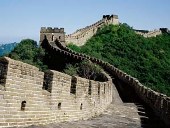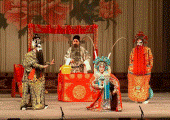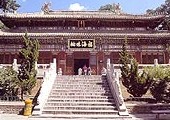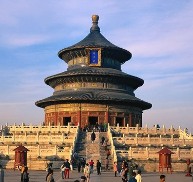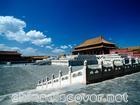Beijing Lhama Temple
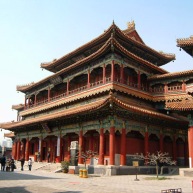
Overview
The Lhama Temple is an island of Buddhism in the heart of the concrete jungle. Monks in wine-colored robes live, study and pray in its pleasant gardens and halls. Decorated with delicate scrolls and massive icons, its buidings are a hybrid of Tibetan, Mongolian and Han architectural styles. The Lhama Temple is a tranquil spot, except during the Spring Festival (Chinese New Year) when it seems all of China's Buddhists throng its altars to burn bushels of incense and pray for good fortune.
Know More
This compound was originally built for Count Yin Zhen who resided here until 1723 when he moved to the Forbidden City to become Emperor Yongzheng. After his death, his devout son, Emperor Qianlong, coverted the site into a Buddhist Lhamasery of the Yellow Hat sect, a sect that's mainly associated with Tibet.
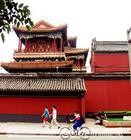 In Chinese, it is called "YongHeGong". Beijing’s largest temple is an enlightening sight, ornamented with intriguing statuary, stunning frescoes, tapestries, incredible carpentry and a formidable pair of Chinese lions. Perhaps most impressive of all is a 18m-(60ft)high sandalwood statue of the Maitreya (future) Buddha in the Wanfu Pavilion, carved from a single tree.
In Chinese, it is called "YongHeGong". Beijing’s largest temple is an enlightening sight, ornamented with intriguing statuary, stunning frescoes, tapestries, incredible carpentry and a formidable pair of Chinese lions. Perhaps most impressive of all is a 18m-(60ft)high sandalwood statue of the Maitreya (future) Buddha in the Wanfu Pavilion, carved from a single tree.
The Lhama (or Tibetan) Temple, with its beautifully landscaped gardens, stunning frescoes and tapestries, and incredible carpentry, is a temple to die for.
Must see
A walkway leads from the ticket booth through the garden and several archways to the temple grounds. After passing through the gateway at the end of the garden, visitors will notice a small Bell Tower on the right, and Drum Tower on the left.
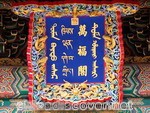 The temple’s bell tower is the first structure reached after passing through the front gates, but the huge bell itself has been placed outside the tower for all to see. This is a detail of calligraphy on one small section of the bell.
The temple’s bell tower is the first structure reached after passing through the front gates, but the huge bell itself has been placed outside the tower for all to see. This is a detail of calligraphy on one small section of the bell.
The temple is a working Lhamasery so it's closed early in the mornings for prayer. Some have questioned whether the monks in the tennis shoes are real monks or government stooges.
The Hall of Heavenly Kings: A head of Bell Tower is the first of five worship halls, the Hall of Heavenly Kings that contains a large statue of Maitreiya, the Future Budhha with the four Heavenly Kings on the side. In the courtyard behind the hall is a pond with a bronze manadala depicting the Buddhist paradise.
The Hall of Harmony: Which is filled with prayer Wheels and Buddhas of the Past, Present and Future, flanked by statues of 18 arhats, Buddhist "saints" who have reached Nirvana but have returned to help others. Formerly the emperor-to-be's living room, the Hall of Eternal Blessing houses statues of the Buddha of Longevity and Buddha of Medicine, to who believers appeal for long lives and good health.
The fourth hall, the Hall of the Wheel of Law is where the monks study scripture and pray in the presence of a 12m-tall bronze statue of Tsong Khapa, the founder of the Yellow Hat sect. Behind this statue is a sculpture of a hall on which stand 500 arhats made of gold, silver, copper, iron and tin. Elegant frescos illustrating the life of the Buddha adorn the east and west walls and there's a rare sand mandala preserved under glass on the west side of the building.
The Pavilion of 10,000 Blessings: The Lhama Temple's crown awaits in the Pavilion of 10,000 Blessings, the last and tallest worship hall. Inside is an extraordinary statue of Budhha standing 18m-tall, which was carved from a single Tibetan sandalwood tree. Satin prayer scarves flow from his giant hands.
As you retrace your steps to the entrance, pop into the minor halls that flank the courtyards, some of which contain Tibetan Buddhist deities covered in scarves to conceal their passionate embraces. From the main entrance, it is but a short walk to the Temple of Confudius.
